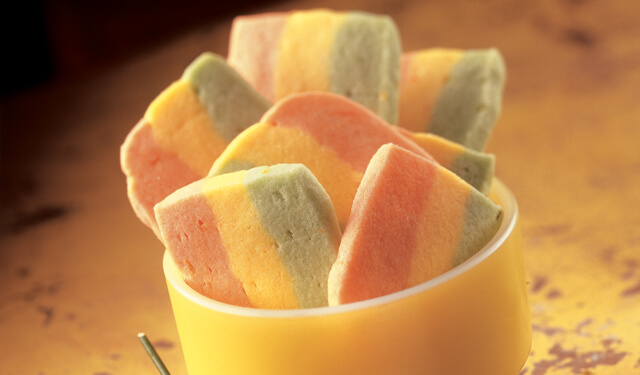
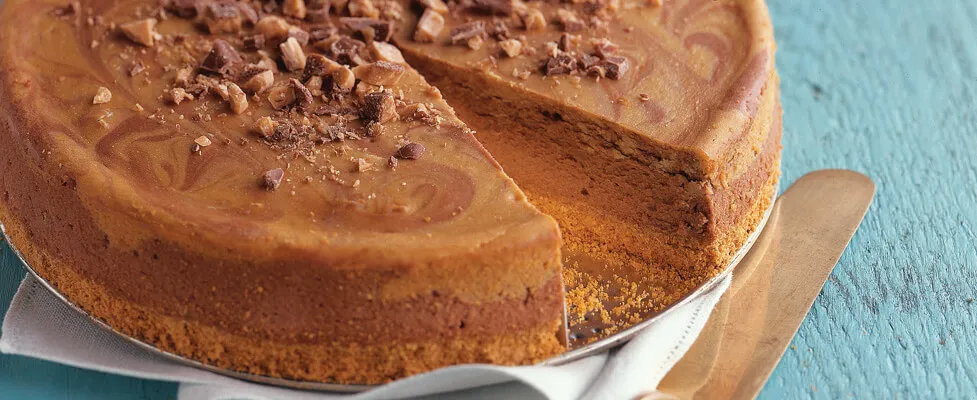
Cheesecake Know-How
With a few simple pointers, you, too, can tackle the rich, luscious cheesecake at home with confidence.
 by
Land O'Lakes Test Kitchen
by
Land O'Lakes Test Kitchen
 by
Land O'Lakes Test Kitchen
by
Land O'Lakes Test Kitchen
The mere mention of cheesecake can cause your mouth to water in anticipation. But the mere thought of making one from scratch can send even a seasoned home cook running. What is it with that weird pan? What is a water bath? And the worst – why, oh why after all that work is there a crack in the middle of my beautiful cheesecake? Read on for answers.
Springform Pans
Cheesecakes are traditionally made in a springform pan. This is a round baking pan with high, straight sides, a clamp on the side and a removable bottom. The higher sides of the pan allow a cheesecake to be taller than a standard cake layer and it is easier to cut and serve because the side of the pan can be slipped off.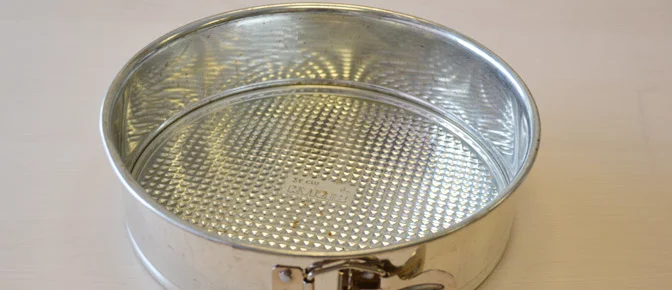
Ingredients
Cheesecake is not really a cake at all, but rather a baked custard. In general, custards are a sweetened mixture of milk, thickened with eggs. In cheesecakes, the milk is replaced most often with cream cheese and sour cream, which is why they are so rich and creamy. It is important for all the ingredients to be at room temperature before mixing. Room temperature ingredients blend together easily, giving the cheesecake a smooth texture. 
Water Baths
If the recipe calls for using a water bath, make sure to wrap the springform pan securely in foil (easy to remove sides are not the best at remaining water tight). We recommend placing an empty pan, large enough to hold the springform pan with a couple of inches left around the edges, in the oven. Place your foil-wrapped, cheesecake-filled springform pan in the middle and fill it slowly with hot water from a tea kettle. That way you are not trying to move a pan of hot water around the kitchen.
Recipes that don’t require using a water bath often require the addition of a starch like flour or cornstarch. Without getting too technical, the starch acts as a buffer which changes the way the ingredients interact during the baking process. There is a slight textural difference with the addition of starch, but the result is still quite delicious.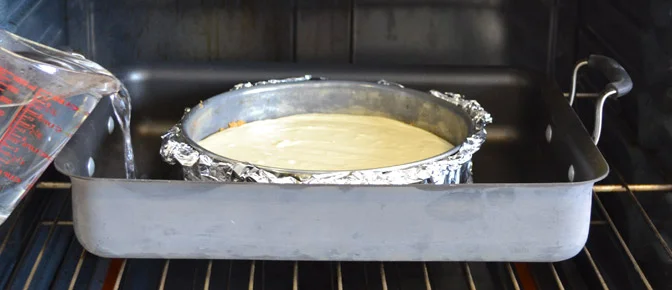
Doneness Test
Unlike with a standard cake, it is not recommended that you poke a cheesecake with a toothpick to see if it is done. In fact, a cheesecake is done before it looks done. The edges should be set, but the center will still be soft. Give the pan a little jiggle; the center few inches should still move a bit. The cheesecake will finish setting up during the cooling process.
One of the most-asked questions about cheesecake is, “Why did it crack?” More often than not, it is because it was overbaked. A cheesecake with a crack on the surface can still be eaten, and the easiest way to deal with it is to cover it up–top it with fruit, ganache or sour cream.
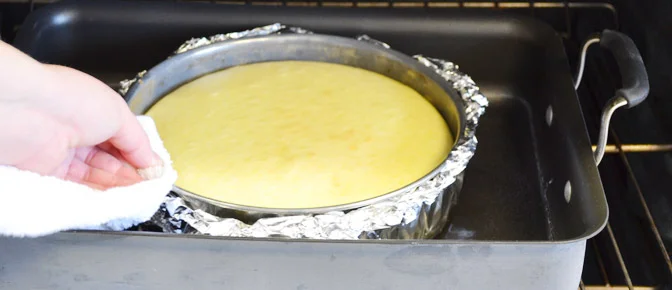
The Waiting Game
It is important to let a cheesecake cool completely and then refrigerate it for at least 8 hours (overnight is even better) before serving. The easiest way to cut it is to use a thin-bladed knife dipped in hot water and wiped dry before each cut. Do not try using a serrated knife, as clumps will form around the ridged edges. Dental floss can also be used–stretch a piece between your hands and press down firmly through the cheesecake.
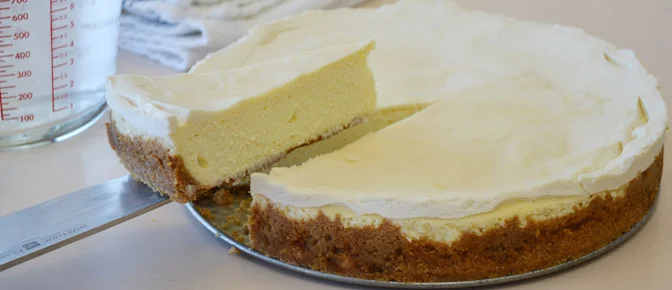
The flavors of cheesecake are only limited by your imagination. Check out our Cheesecake Recipe Collection for inspiration and try making one for yourself!
Share Your Thoughts
Did you find this article helpful? Has it inspired you? What else would you like to know?



